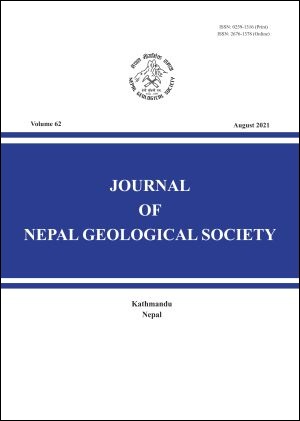Geology and sedimentary environment of the Surma Group of rocks, Bandarban anticline, Bandarban, Bangladesh
DOI:
https://doi.org/10.3126/jngs.v62i0.38697Keywords:
Lithofacies, Depositional environment, Paleocurrent, Surma Group, Chittagong Hill TractsAbstract
The study illustrates the effect of tectonics, climate, and relative sea-level change on the depositional process of the Miocene Bhuban and Boka Bil Formation of Bengal Basin. Outcrop sediments of five transverse sections exposed along the axial zone of Bandarban anticline were studied. Twelve lithofacies such as Gm, Gms, Sm, ST, Sp, Sr, Sl, Sf, Sll, Fw, Fl and Fm have been identified within the successions and grouped into (i) turbidite generated, (ii) outer fan distal lobe basin plain and (iii) tide-influenced facies association. The analyses reveal that the Bhuban Formation was turbidite- generated that deposited below the continental shelf-slope environment. The Lower Bhuban Member consists of gray to brownish-gray calcareous sandstone with shale deposited under the channelized lobe of submarine fan. The Middle Bhuban Member dominated by black shale-siltstone deposited in distal turbidite lobe due to change the flow regime. The Upper Bhuban Member consists of yellow to yellowish gray, coarse to medium-grained sandstone-siltstone with black shale that deposited under channelized to nonchannelized lobes of submarine fan. The increasing sedimentation during the formation of the Upper Bhuban Member can be caused by increased the intensity of the Asian Monsoon that carried huge sediment from the Himalaya. The Boka Bil Formation was deposited under estuary to tidal flat environment. The area was uplifted during and/or after subduction of the Indian Plate beneath the Burmese Plate. The monsoonal intensity enhances sedimentation that moved prograding delta towards the south. These processes shifted depositional environment from continental shelf-slope to marginal shallow marine during deposition of the Boka Bil Formation. The continental slope aligned east-west direction and sediments likely derived from the Himalaya and Trans-Himalaya in the present geographical setup during deposition of the sediments.
Downloads
Downloads
Published
How to Cite
Issue
Section
License
© Nepal Geological Society




